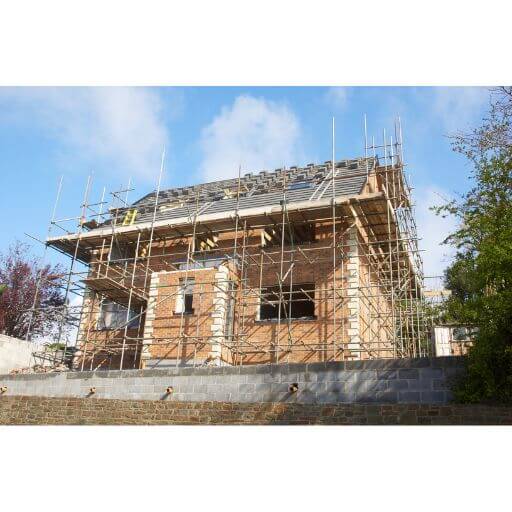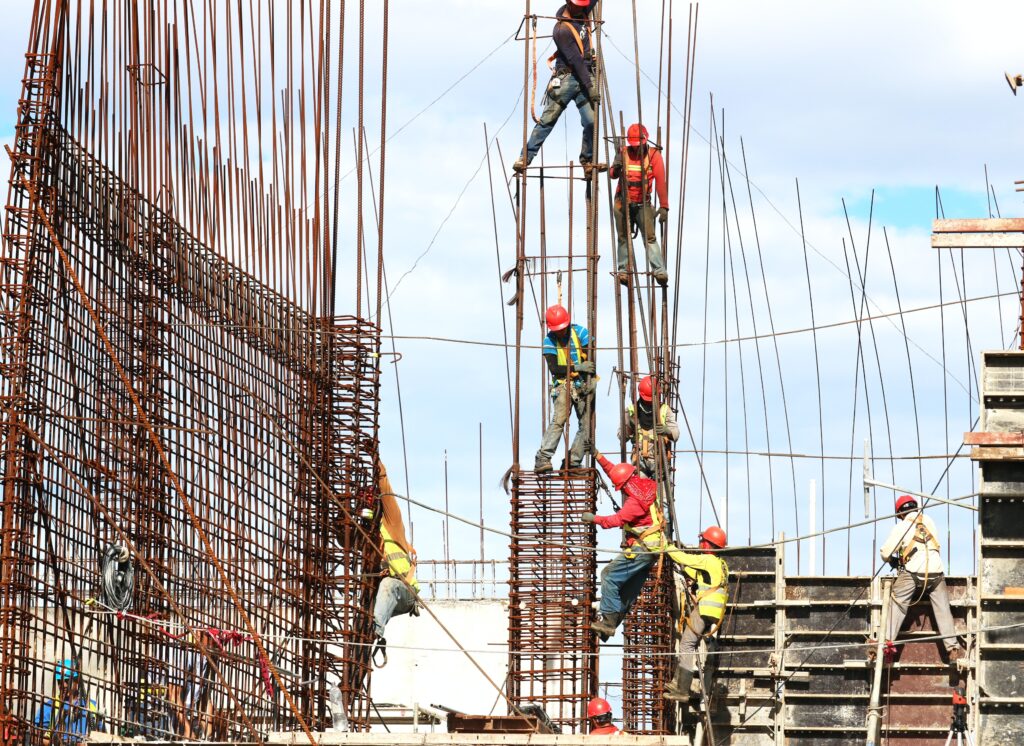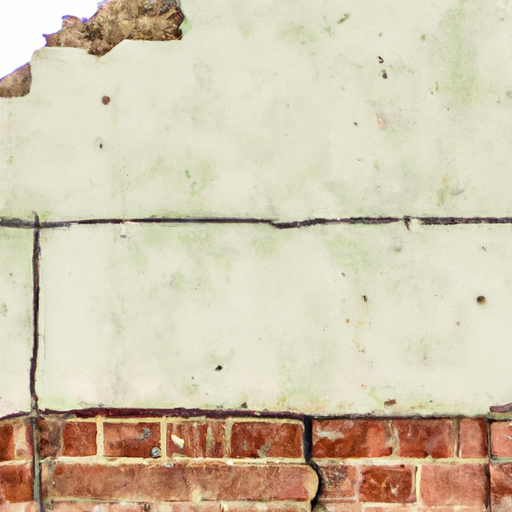
Imagine you’re embarking on a home renovation project, eager to enhance the structural integrity and aesthetic appeal of your space. In the midst of planning, you stumble upon a crucial question: “Do you need building regs to install a lintel?” This concise article is here to shed light on this seemingly elusive query, offering you the necessary information and guidance to ensure a smooth and compliant installation process. So grab a cup of tea, sit back, and let’s explore the world of lintels together.
What is a Lintel?
Definition of a Lintel
A lintel is a structural component commonly used in construction to support the load above an opening, such as a window or a door. It acts as a horizontal beam that spans the gap and transfers the weight of the structure above it to the supportive walls or columns on either side. Lintels are typically made from materials such as concrete, steel, or wood, depending on the specific requirements of the building and the span of the opening.
Types of Lintels
There are several types of lintels available, each suitable for different applications and structural requirements. The most common types of lintels include:
- Reinforced Concrete Lintels: These lintels are made from precast reinforced concrete and are often used in load-bearing walls. They provide excellent strength and durability, making them suitable for heavy loads and longer spans.
- Steel Lintels: Steel lintels are typically made from hot-rolled steel or fabricated steel sections. They offer high strength and versatility, allowing for flexible design options. Steel lintels are commonly used in both load-bearing and non-load-bearing walls.
- Timber Lintels: Timber lintels are made from wood and are primarily used in non-load-bearing walls or as decorative elements. They are lightweight and easy to work with, making them a popular choice for smaller openings or situations where structural strength is less critical.
- Laminated Veneer Lumber (LVL) Lintels: LVL lintels are made by bonding together multiple layers of thin wood veneers with adhesives. This creates a strong and dimensionally stable product that can be used for both load-bearing and non-load-bearing applications.
The type of lintel chosen will depend on factors such as the load that needs to be supported, the span of the opening, and the aesthetic requirements of the building.
Building Regulations and Lintels
Understanding Building Regulations
Building regulations are a set of legal requirements that need to be followed when undertaking construction work to ensure the health, safety, welfare, and energy efficiency of the building and its occupants. These regulations set standards for various aspects of construction, including structural stability, fire safety, ventilation, and energy efficiency.
The Importance of Building Regulations
Building regulations play a crucial role in maintaining the safety and quality of buildings. They ensure that structures are designed and built to withstand the imposed loads, such as the weight of the building materials, furniture, and occupants. Without adhering to building regulations, there is an increased risk of structural failure, which could lead to significant damage to property and pose a threat to the safety of occupants.

When Building Regulations Apply to Lintels
Building regulations apply to the installation of lintels when there are structural alterations being made to a building, such as creating a new opening or replacing an existing lintel. These alterations can affect the load-bearing capacity and structural stability of the building, making it essential to comply with building regulations to ensure safety.

Determining the Need for Building Regulations
Checking Local Building Regulations
Before installing a lintel, it is crucial to check the local building regulations in your area. Building regulations may vary depending on the country, state, or municipality. It is essential to familiarize yourself with the specific requirements and obtain the necessary permits before proceeding with any construction work.
Consulting with a Structural Engineer
If you are unsure about whether building regulations apply to the lintel installation in your specific situation, it is advisable to consult with a qualified structural engineer. They will assess the structural requirements and advise you on the best course of action to ensure compliance with building regulations.
Considering the Weight and Span
The weight and span of the lintel play a significant role in determining whether building regulations apply. If the lintel needs to support a heavy load or a wide span, it is more likely that building regulations will be required. A structural engineer can provide guidance on the appropriate lintel size and material to meet the necessary building regulations.
Differentiating Between Load-Bearing and Non-Load-Bearing Walls
It is important to understand whether the wall in which the lintel is being installed is load-bearing or non-load-bearing. Load-bearing walls carry the vertical weight of the structure and must meet more stringent building regulations. Non-load-bearing walls, on the other hand, do not carry any significant weight and may have less stringent requirements. Consulting with a structural engineer will help determine the type of wall and the corresponding building regulations that apply.
Installing Lintels Without Building Regulations
Risks and Consequences
Installing lintels without complying with building regulations can have serious risks and consequences. Without proper structural analysis and design, the lintel may not be able to support the intended load, leading to structural failure and potential collapse of the wall or the surrounding structure. This poses a significant risk to the safety of occupants and can result in extensive property damage.
Insurance and Warranty Implications
Installing lintels without the necessary building regulations can also have implications on insurance coverage and warranties. In the event of a structural failure or damage caused by the improper installation of a lintel, insurance claims may be denied, leaving the homeowner responsible for the costs of repairs. Additionally, warranties on building materials or workmanship may also be voided if the lintel installation does not comply with building regulations.
It is vital to ensure that any construction work, including lintel installations, is carried out in compliance with building regulations to mitigate these risks and consequences.
Getting Approval for Lintel Installation
Submitting Building Control Application
To obtain approval for lintel installation and ensure compliance with building regulations, a building control application must be submitted. The application includes relevant details and plans of the proposed installation, demonstrating how it complies with the necessary regulations. It is essential to provide accurate and comprehensive information to avoid delays in the approval process.
Providing Relevant Documentation
Along with the building control application, additional documentation may be required to support the lintel installation proposal. This documentation may include structural calculations, design drawings, and specifications of the proposed materials and lintel type. The documentation aims to demonstrate that the lintel installation meets the required structural integrity and safety standards.
Receiving Approval
Once the building control application is submitted with all the necessary documentation, it undergoes a review process by the local building control authority. If the proposal meets the building regulations, approval is granted, allowing the lintel installation to proceed. It is essential to wait for the approval before commencing any construction work to ensure compliance and avoid potential penalties or enforcement action.
Working with a Professional
Benefits of Hiring a Professional
When it comes to lintel installation and ensuring compliance with building regulations, working with a professional is highly recommended. Hiring a professional contractor or builder with experience in structural work provides several benefits, including:
- Expertise and Knowledge: Professionals have the knowledge and expertise to assess the structural requirements, select the appropriate lintel materials, and ensure compliance with building regulations.
- Compliance with Building Regulations: Professionals are familiar with the local building regulations and can navigate the approval process more efficiently, ensuring that all necessary permits are obtained.
- Efficient and Safe Installation: Professionals have the necessary skills and equipment to install lintels correctly and safely.
- Warranty and Insurance Coverage: Working with a professional often comes with warranties on the workmanship and may ensure that insurance coverage remains valid.
Finding a Qualified Contractor or Builder
When hiring a contractor or builder for lintel installation, it is essential to find a qualified professional. Recommendations from friends, family, or local building associations can be a good starting point. It is also advisable to request references, review portfolios of previous work, and check online reviews to ensure the contractor or builder has a good reputation and a track record of successful projects.
Checking for Accreditation
Another important aspect to consider when hiring a professional for lintel installation is their accreditation. Look for professionals who are members of recognized industry associations or hold appropriate certifications. These accreditations demonstrate that the professional has met certain standards and follows best practices in their work.

Alternative Solutions
Using Steel Beam Alternatives
In some cases, alternatives to traditional lintel installations may be considered. One such alternative is the use of steel beams, also known as RSJs (rolled steel joists), which can provide structural support for openings. Steel beams offer high strength and can span greater distances, allowing for more flexible design options. However, it is important to note that the use of steel beams may still require compliance with building regulations, and consultation with a structural engineer is advised.
Considering Other Structural Modifications
If the lintel installation process poses significant challenges or building regulations cannot be met, it may be necessary to consider alternative structural modifications. This could involve relocating windows or doors, changing the layout of the building, or even reconfiguring walls to eliminate the need for a lintel. Consulting with a professional, such as an architect or a structural engineer, can provide valuable insights and alternative solutions to address the specific requirements of the project.
Safety Considerations
Choosing the Right Lintel Material
Choosing the right lintel material is crucial for ensuring the safety and structural stability of the building. The material selection should take into account factors such as the load requirements, span of the opening, and the specific characteristics of the building. Consulting with a professional can help determine the most suitable material for the lintel installation to ensure compliance with building regulations and maintain structural integrity.
Ensuring Structural Stability
Maintaining structural stability is of paramount importance when installing lintels. Any construction work, especially involving load-bearing elements, must be carried out with precision and care. Structural stability can be achieved by using appropriate lintel materials, following proper installation techniques, and adhering to building regulations. Regular inspections and maintenance of lintels are also essential to identify any signs of deterioration or damage and address them promptly to prevent structural issues.

Building Control Inspections
Scheduled Inspections
Building control inspections are an integral part of the lintel installation process. These inspections are conducted at various stages of the construction work to ensure compliance with building regulations. The local building control authority will schedule inspections to assess the installation progress and verify that all work meets the required standards. It is important to cooperate with the building control inspectors and provide access to the site as needed to facilitate the inspection process.
Checking Compliance with Building Regulations
During the building control inspections, the inspectors will assess various aspects of the lintel installation to ensure compliance with building regulations. This includes verifying the size and type of the lintel, the structural integrity of the installation, and adherence to the approved plans and documentation. If any non-compliance is identified, the necessary steps will need to be taken to rectify the issues before obtaining final approval.
Conclusion
Installing a lintel may seem like a simple task, but it is vital to consider building regulations and the structural implications it may have on the building. Understanding when building regulations apply to lintel installation and seeking appropriate approvals is essential to ensure the safety, stability, and compliance of the building. Working with a professional, following proper procedures, and considering alternative solutions when necessary can help navigate the lintel installation process successfully. By adhering to building regulations and prioritizing the safety of the structure, homeowners can enjoy peace of mind and protect their investment in the long term.









